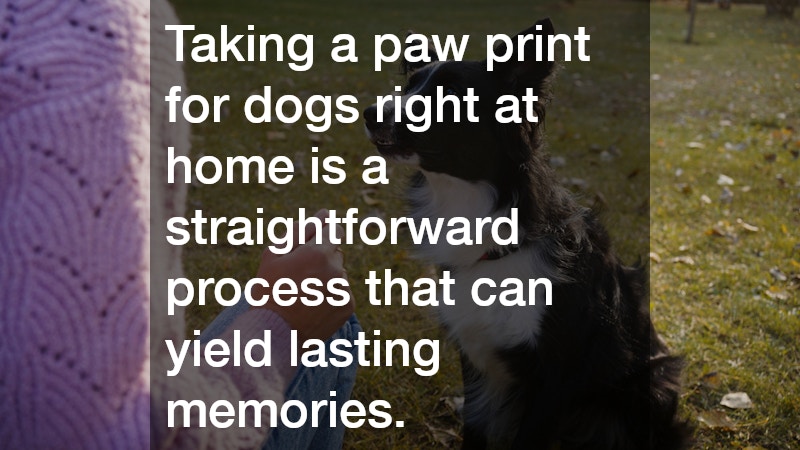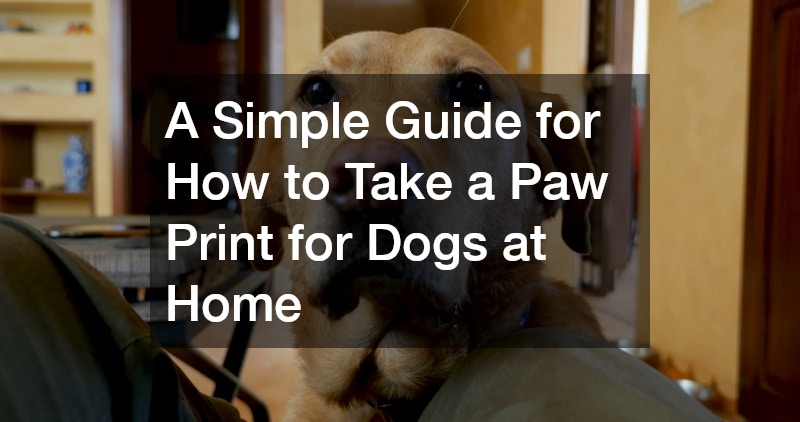Creating a paw print for dogs in your home can be a fun and memorable activity. Whether you’re doing it for a keepsake or a craft project, taking a paw print at home is easy with the right steps. This guide will walk you through the process and provide helpful tips to ensure you get the best paw print possible.
What Materials are Needed for Taking a Paw Print?
To make a paw print of your dog at home, having the right materials is crucial for achieving an accurate and lasting imprint. The basic materials required include non-toxic paint or ink, which is safe for your dog’s paws and easy to clean off.
Additionally, you’ll need a sturdy piece of paper, cardstock, or canvas to press the paw onto. If you choose to use a DIY clay or dough option, you’ll also require common kitchen ingredients such as flour, salt, and water to create a moldable paste.
In addition to the primary materials, a few tools will enhance the process. A shallow dish or paintbrush can help evenly distribute the paint or ink onto your dog’s paw, ensuring a clear print. Having damp paper towels or wipes on hand is essential for cleaning your dog’s paw immediately after the print is taken to prevent any mess. Lastly, a towel or soft blanket can make your pet more comfortable during the process, especially if your dog tends to be anxious or fidgety.
Safety is another vital consideration while gathering materials. Optining for non-toxic, pet-safe substances is imperative to prevent any harm in case your dog decides to lick its paws after the print is made. If you’re using a clay or dough method, ensure that none of the components are harmful if ingested in small amounts, and avoid any ingredients that might cause an allergic reaction for your dog.
How to Prepare Your Dog for a Paw Print?
Preparation is key to obtaining a successful and stress-free paw print from your dog. Start by choosing a quiet and comfortable location in your house where you and your dog can be relaxed. This might be a cozy corner in the living room or a dedicated crafting area where your dog is already familiar and at ease. Ensuring the environment is calm and free of loud noises or distractions will help your pet feel safe and cooperative.
Getting your dog accustomed to having its paws touched is another important step. You can practice by gently handling your dog’s paws for a few days leading up to the paw print session. This will make it easier for your dog to trust you during the actual process. Offer treats or verbal praise when your dog allows its paws to be held calmly, reinforcing positive behavior and building a sense of trust.
Finally, setting up all materials before involving your dog in the print process will ensure things run smoothly. Have everything within reach so you can make the print quickly and efficiently, minimizing the time your dog needs to stay in one spot. Remember, patience is key, as not all dogs are immediately comfortable with their paws being handled, so taking time to prep your dog properly can lead to a better, more enjoyable experience for both parties involved.
What are the Step-by-Step Instructions for Making a Paw Print?
To start creating your dog’s paw print, first lay out all the necessary items within easy reach. Then, dip your dog’s paw gently into the non-toxic paint or ink, ensuring an even coat covers the entire paw pad. If you’re using a brush, apply the ink or paint directly onto the paw in a thin, even layer. Be sure not to use too much paint, as this could result in a smudged or unclear print.
Next, gently press your dog’s paw onto the paper, canvas, or clay surface, applying even pressure across the paw to capture all the details of the paw pads and claws. Hold it in place for a few seconds to ensure a clear transfer of the paw pattern. If using clay or dough, be sure the material is soft enough to leave a good indentation, but not so thin that it breaks apart easily. If you’re looking for unique craft ideas, consider experimenting with different colored inks or combining multiple paw prints into a pattern or picture.
After you have successfully made the paw print, remove your dog’s paw gently and immediately clean it with damp paper towels or wipes to prevent any paint residue from being ingested or spread around your home. Allow the print to dry or cure thoroughly, depending on the medium you used. For paint and ink, this could be as quick as a few hours, while moldable clay might take a day or two. Display the finished paw print in a frame or as part of a larger keepsake, celebrating the love and bond you share with your furry companion.
Conclusion
Taking a paw print for dogs right at home is a straightforward process that can yield lasting memories. By gathering the right materials, preparing your dog adequately, and following the proper steps, you can create a cherished keepsake. Enjoy this creative bonding activity and the special memento it provides.










